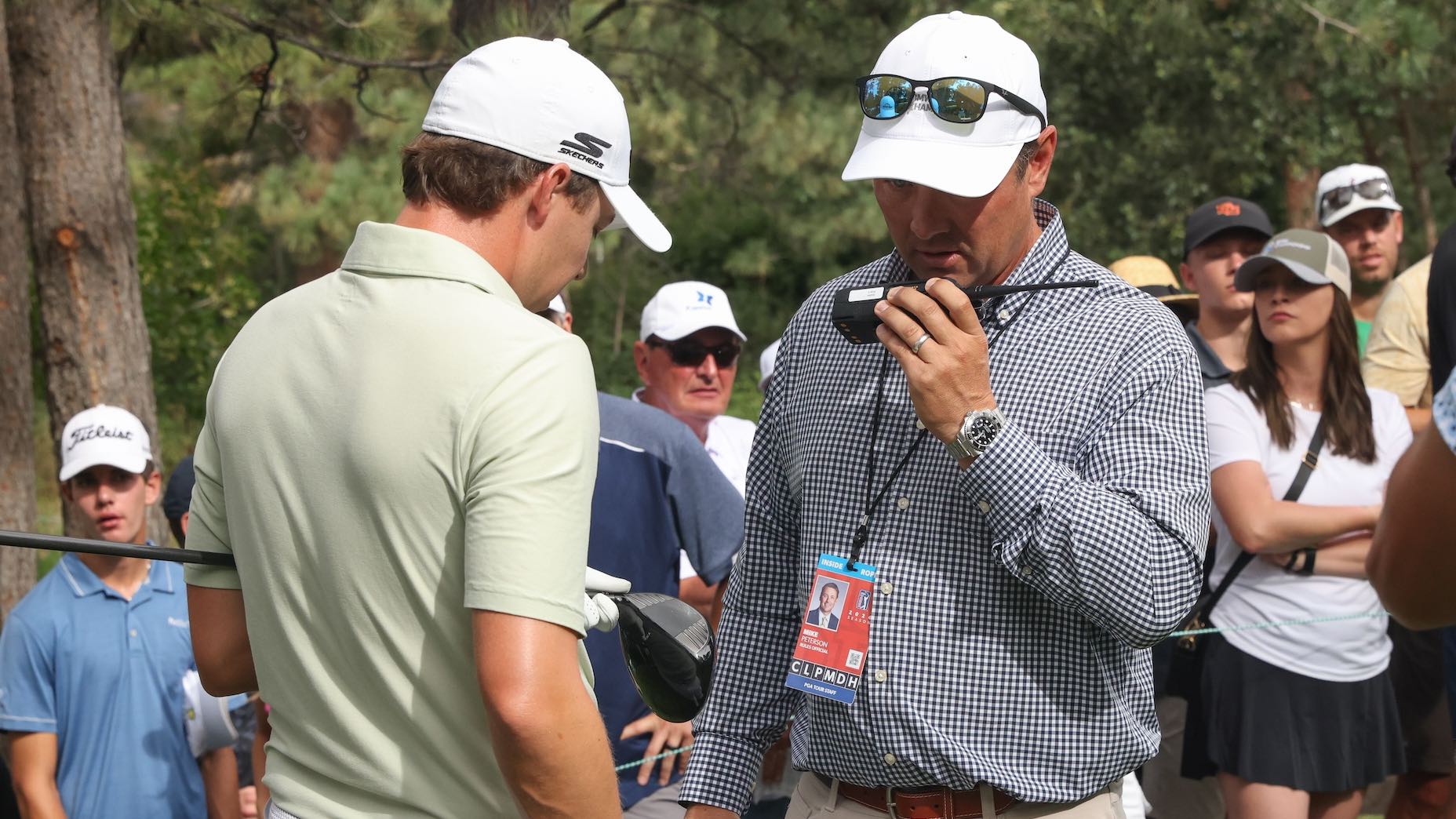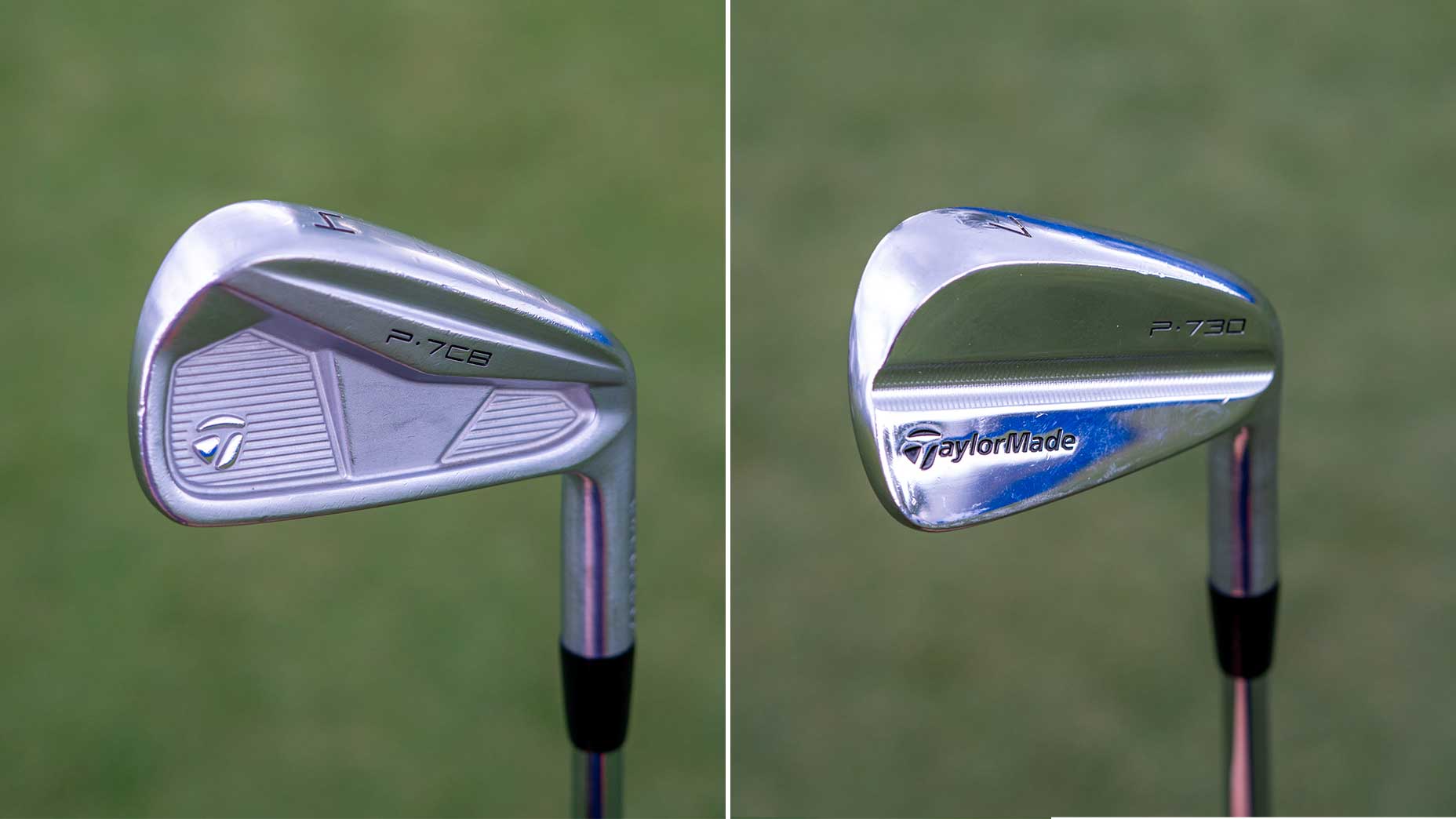It all started on the 8th hole with an observation and a question: “It’s got to be significant, surely?” Matt Fitzpatrick said to a PGA Tour rules official as they both took a closer look at his Titleist TSi driver. A crack was now present on the face Fitzpatrick deemed significant enough to alter the club’s performance negatively. The rules official disagreed.
“I don’t think [the crack] is enough yet,” the rules official responded. “They made the rule so it’s got to be, like, folding in on itself.”
Thanks to Model Local Rule G-9 in the USGA’s Rules of Golf, which states a club isn’t replaceable due to a crack, Fitzpatrick wasn’t going to win the debate — not unless it was significant enough to cave in the face.
“There’s an obvious crack there that is causing a defect to the ball flight,” said Fitzpatrick, who confirmed he had several backup driver heads in his locker.
Shortly after the rules official declined to let Fitzpatrick swap heads, the 29-year-old, mostly likely trying to prove a point, stuck with driver and watched as the ball snapped low and left before coming to rest in the rough.
“This is outrageous,” Fitzpatrick said as he walked up the fairway next to a rules official in a golf cart. Social media was in a lather as #GolfTwitter blasted the ruling. No one could seem to understand why Fitzpatrick was being forced to play with a faulty driver for the remaining 10 holes.
As the decision played out on television, several former caddies and tour pros offered their takes on the situation, including John Wood, a longtime Tour looper and current on-course reporter for NBC, who highlighted the biggest issue with allowing pros to constantly swap out their driver head whenever a crack was present on the ultra-thin face.
“The rule is written this way to counteract the ‘spring effect’ or ‘characteristic time’ rule measuring ball speed with a driver, or basically how thin a driver’s face can be,” Wood said on X. “A driver must be ‘significantly damaged’ to be replaceable, which basically means cracked all the way through or caved in/collapsed completely. If pros were allowed to replace a driver with any sort of a crack, manufacturers would build the faces as thin as legally possible. It is a roundabout way of controlling distance.
“Written this way, manufactures have to build their drivers with a bit of a ‘buffer zone’ so they don’t crack more often. The thinner the face, the faster the ball comes off, the more often they would crack and be replaced with another one also pushed right up against the limit. Yes, I think it’s ridiculous. Matt’s driver was obviously unusable after he found the crack. I don’t think it’s a good rule either, but that’s the reason.”
The current rules in place around the spring-like effect of a driver’s face are meant to add restrictor plates to the fastest piece of technology in the bag. Equipment manufacturers already push the limits of speed, which doesn’t allow for much wiggle room in terms of face thickness. And there’s no chance the governing bodies are going to approve a thinner face in the future.
The simple truth is driver faces get faster, not slower over time, increasing the chances of cracks at inopportune moments. Ultimately, that’s a risk golfers take whenever they tee it up, especially with an older model driver, a la Fitzpatrick’s TSi.
What needs to be cleared up, regardless of the model in question, is the gray area around the definition of “significantly damaged,” which is only defined as a crack that causes the face to completely cave in. On the latest episode of GOLF’s Fully Equipped, Golf Laboratories founder and podcast co-host, Gene Parente, said there’s a simple way to clear up the confusion.
“The thing I don’t understand about the rule is someone is making an arbitrary judgment saying, eh, it doesn’t look too bad. I think you can continue — with no evidence” Parente said. “As someone who does this for a living and had countless cracks on countless pieces of equipment, I can tell you that once there’s a crack, there’s a problem. There are bulge and roll gauges you can put on the face and see what the intended curvature is. That’s our first sign before you see cracking. We’ll put this gauge on and take a look at the face. If there’s a gap, that’s the first indication there’s a problem. In a very short period of time, there’s cracking.”
Measuring the bulge and roll of a driver face during the course of play isn’t going to happen, but if the face has a visible crack, there’s a good chance it’s going to negatively affect performance, rendering it “significantly damaged.” As Kris McCormack, True Spec’s VP of Tour and Education, said on the podcast, it’s akin to being forced to play with a cracked baseball bat.
“Look at any other sport,” said Fully Equipped co-host Kris McCormack. “That would be like telling a major league baseball player, ‘Hey, I know your bat just cracked, but we’re going to have you take that to your next at-bat.’ I think think it’s an antiquated rule. If it’s altered from its original design state, it should be able to be replaced.”
Want to overhaul your bag for 2024? Find a fitting location near you at True Spec Golf.










